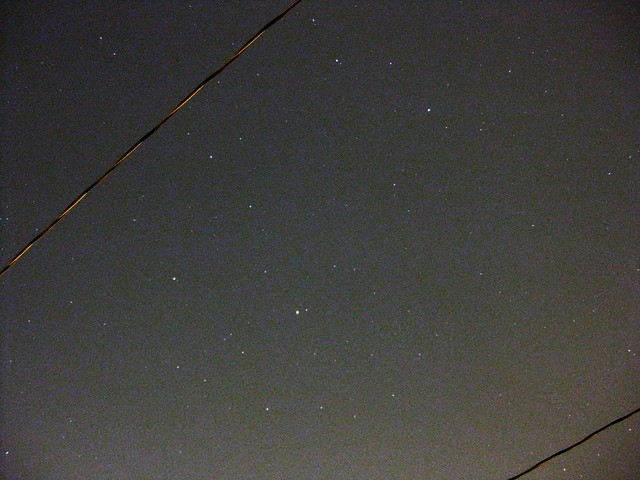One evening last week I looked to the west and saw a bright light above the horizon. I couldn’t tell whether it was moving or not, and wondered: was it an airplane, or Venus?
I couldn’t remember whether Venus was visible in the evening or morning (or at all) right now. It was roughly in the direction of an airport, so it could easily have been a helicopter or an airplane traveling at an angle roughly in line with my line of sight. By the time I got home, buildings and trees blocked the horizon, so I didn’t think much more of it.
I’m in California. Interestingly enough, thousands of miles away in Ohio, people have been seeing a bright light in the west every night for the past week and making UFO reports.
Last night I decided to see how early I could spot Venus, and caught it fairly high in the sky just after sunset. It was hard to see without really looking for it because the sky was still light, but it became a lot easier as the sky darkened. Not surprisingly, as it set and brightened in the dimming sky, it passed through roughly the area I remembered seeing the unidentified light last week. Mystery solved.
I don’t understand why, in a world full of airplanes, helicopters and the occasional blimp — not to mention a world where we see stars and planets every night (barring clouds and light pollution) — people jump past these mundane explanations when they see a light in the night sky and decide it must be an alien spacecraft.


